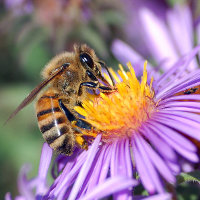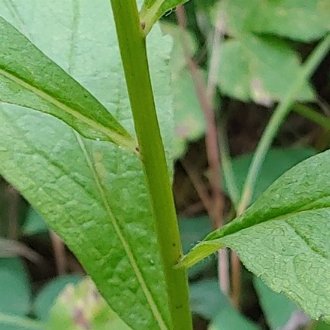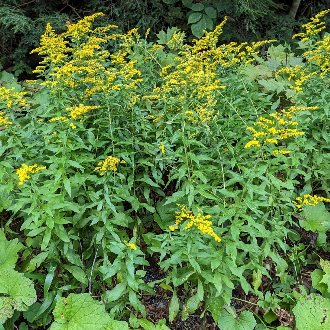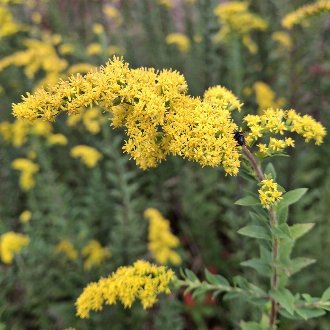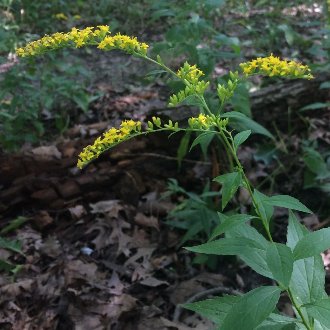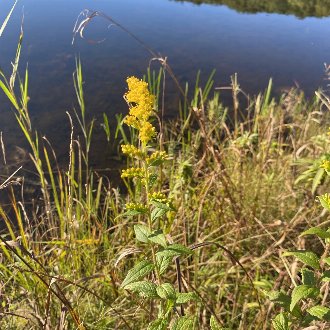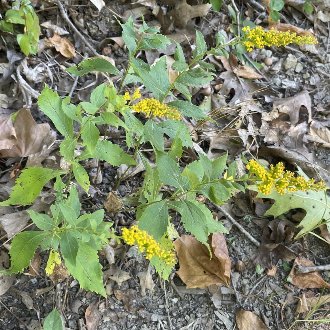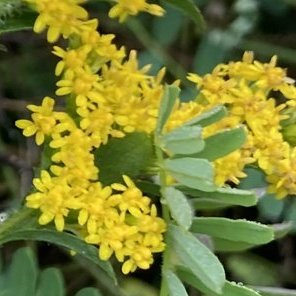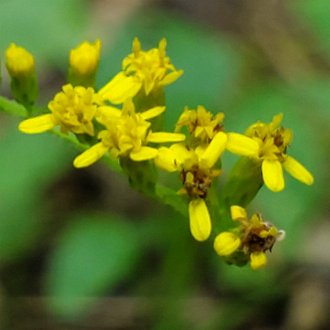Wrinkleleaf Goldenrod vs Elmleaf Goldenrod
This guide is under construction and has not been published yet. It may have errors. When in doubt, double-check other sources for definitive ID.These two species have similar leaf shapes, largely-overlapping bloom periods, and a large range overlap. They can often be told apart by differences in stem pubescence, growth habit, and ray count of the flowerheads, and they also have average differences in inflorescence shape. S. rugosa ranges farther northeast and southeast and ranges into sunnier habitats but is more restricted to moist habitats and acidic soils, whereas S. ulmifolia ranges farther northwest and ranges into drier habitats prefers calcareous soils, but is more restricted to partly-shaded habitats.
Wrinkleleaf Goldenrod (Solidago rugosa) | Elmleaf Goldenrod (Solidago ulmifolia) |
A perennial of moist, sunny sites with slightly acidic soil, common across a wide range in eastern North America. | A perennial of open upland woods, usually on calcareous soils, native to a wide range in Eastern North America. |
Stems may be smooth, but are often densely hairy; hairs are stiff, and may be pressed against the stem or not. Photo © Bill Keim, CC BY 4.0. | Stems are either hairless, or only sparsely hairy. Photo © Ryan Sorrells, CC BY 4.0. |
Rhizomatous; forms colonies of up to 50 stems by vegetative reproduction. Photo © Nick Kleinschmidt, CC BY 4.0. | Not rhizomatous. Often sends up only one stem, but base of stem may form a woody base (caudex) which may branch to send up multiple stems with a clumping habit. Photo © Robert Hoard, Public Domain. |
Inflorescences may occasionally be sparse, but average much denser, with more (50-1500) flowerheads. Photo © John Keisers, CC BY 4.0. | Inflorescences average much sparser, with long, widely-spreading branches totaling fewer (20-150) flowerheads. Photo © Scott, Public Domain. |
Ranges into sunnier habitats and is more restricted to moist sites. Prefers acidic soils. Photo © Bonnie Semmling, CC BY 4.0. | Ranges into drier habitats and is more restricted to shade. Prefers calcareous soils. Photo © Sam Kieschnick, CC BY 4.0. |
Flowerheads usually have 6–8 rays, rarely as few as 4 or as many as 12. Rays usually look dense around each compound flower. Photo © Jaime McGuigan, CC BY 4.0. | Flowerheads have 3-6 rays, leading the rays to look sparse around each compound flower. Photo © Samuel A. Schmid, CC BY 4.0. |
References & External Resources
These short lists show only links helpful for ID. For a complete list of references and resources also covering other aspects of ecology, visit the links section of the full article on each plant, which is the first entry here.

